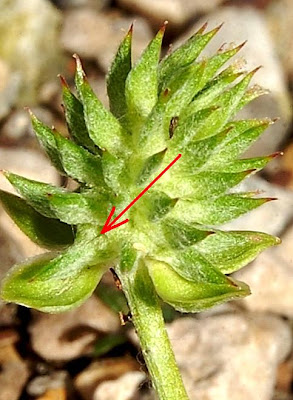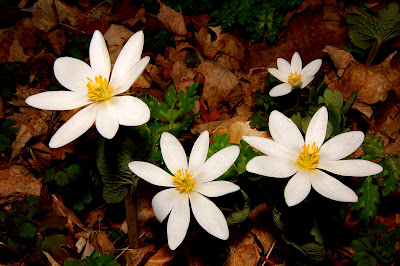It is suggested that no plants are truly saprophytic, that it is not the plants that are doing the breaking down of the dead plant material, but symbiotic fungi (mycorrhiza) working with the plants that are doing the decomposing (www.helium.com).
I was fortunate to find and photograph all four species last year, but it required traveling from one end of the state to the other, beginning the first week in May and ending in the middle of September.
The first to bloom in the spring is Wister's coral-root (Corallorhiza wisteriana), which is found primarily in the southern half of the state. The flowers (below) were found in bloom on May 4, near Versailles State Park and were growing in the flood plain of a small creek and not on the moderately moist slopes of ravines where it typically occurs (Homoya 1993).


Later in the summer in late July and August one can find spotted coral-root (Corallorhiza maculata). The flowers (below) were blooming on July 18, at Cowles Bog in northwestern Indiana.


Another mid- to late-summer bloomer is crested coral-root (Hexalectris spicata), which differs from members of the coral-root genus (Corallorhiza) by having a different column structure and thicker more unbranched rhizomes (Homoya 1993). The flowers (below) were photographed on July 20, in Clark County.


Autumn coral-root (Corallorhiza odontorhiza) is the smallest member of this genus and no doubt possesses the least showy flower, if indeed the flower can even be found in its open state. I have been monitoring a small colony of this species at Cowles Bog in Porter County for four years. Only once have I found a single open flower on any of the plants.
This is the typical flower stalk of autumn coral-root (below) with its tightly closed flower.


And here--in all its glory--is the open flowered form (below) photographed on September 19.

Sadly, another saprophytic orchid, early spring coral-root (Corallorhiza trifida), has been extirpated from Indiana. It was found in one site only, in a unique natural area in the Indiana Dunes, which is now the location of a foreign owned steel mill (Homoya 1993).
Homoya, M.A. 1993. Orchids of Indiana. Indianapolis: The Indiana Academy of Science.















